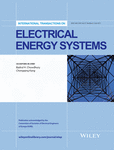Distributed generation for economic benefit maximization through coalition formation–based game theory concept
Summary
For enhancing the awareness and competitiveness of distributed energy resources (DER) in energy markets, an optimal and implementation and operation of these resources. To address this issue, in this paper, objective, DERs that can collaborate with other DER installed as closer or far topologies, forming coalitions for gaining competitiveness between each other in the energy market, have been selected for study. The profit allocation due to coalition between DERs is being identified as an important issue for ensuring renewable sources installation in smart grids. A methodology with, bi-level, structures is proposed to maximize the profit in a competitive market and allocate profit resulting from a coalition formation between multiple energy districts encompassing DERs. In the primary level analysis, a mechanism based on noncooperative game theory is presented with the aim of creating a competitive market, as well as, to study the supply energy strategies based on pricing mechanisms of multiple energy suppliers. In the second level, various distribution methods, namely, Shapley, Nucleolus, and Merge and Split, are compared with each other for profit allocation analysis. Our study highlights that the disconnection of DERs resulting from pricing decisions allows them to collaborate together with aggregated facilities to achieve higher profits due to excess production and avoid penalties due to shortages in production, which in essence, demonstrates a significant operational increase in their profits, a concept that favors the likelihood for all energy suppliers and producers to form a coalition for economic optimizations.




